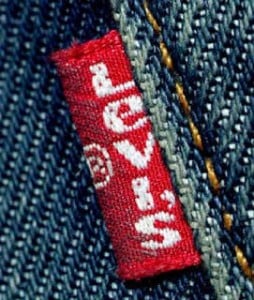 How many gallons of water do you think it takes to produce one pair of jeans? Levi Strauss & Company knows: typically 919 gallons. The New York Times reports that those 919 gallons “include the water that goes into irrigating the cotton crop, stitching the jeans together and washing them scores of times at home.” For Levi Strauss, that number is too high. That’s why the noted clothing company has pledged to reduce water use for the sake of environmental responsibility and as a response to water shortages possibly caused by climate change.
How many gallons of water do you think it takes to produce one pair of jeans? Levi Strauss & Company knows: typically 919 gallons. The New York Times reports that those 919 gallons “include the water that goes into irrigating the cotton crop, stitching the jeans together and washing them scores of times at home.” For Levi Strauss, that number is too high. That’s why the noted clothing company has pledged to reduce water use for the sake of environmental responsibility and as a response to water shortages possibly caused by climate change.
The company has a few ideas in mind:
“Levi Strauss has helped underwrite and champion a nonprofit program that teaches farmers in India, Pakistan, Brazil and West and Central Africa the latest irrigation and rainwater-capture techniques. It has introduced a brand featuring stone-washed denim smoothed with rocks but no water. It is sewing tags into all of its jeans urging customers to wash less and use only cold water.”
Levi Strauss also recommends that their consumers take part in their initiative by not washing jeans regularly. Cutting back on a few loads of laundry could save gallons of water. For a possible alternative, the company recommends placing your jeans in your freezer, which can kill germs that cause bad smells.
Water shortages have been a concern for the company recently. In 2009 Levi Strauss joined several other major companies to form the Better Cotton Initiative, which “promotes water conservation and reduces pesticide use and child-labor practices in the industry.” And last year “floods in Pakistan and parched fields in China destroyed cotton crops and sent prices soaring. Roughly two pounds of cotton go into every pair of jeans that the company manufactures.”
Levi Strauss has implemented their nonprofit program and achieved surprisingly positive results: “A three-year independent study of Indian farms found those adopting the new techniques reduced water and pesticide use by an average of 32 percent, the initiative says. The profit was 20 percent higher than that of a control group using traditional methods.”
The company is aware that results will not be immediate, but is putting forth the best effort to ensure that water conservation becomes a major staple of the company’s future.














Leave a Reply